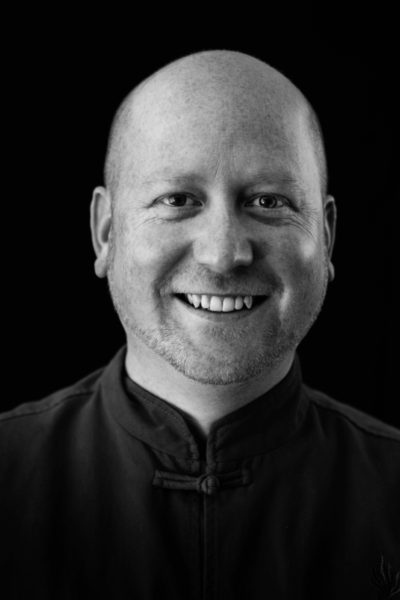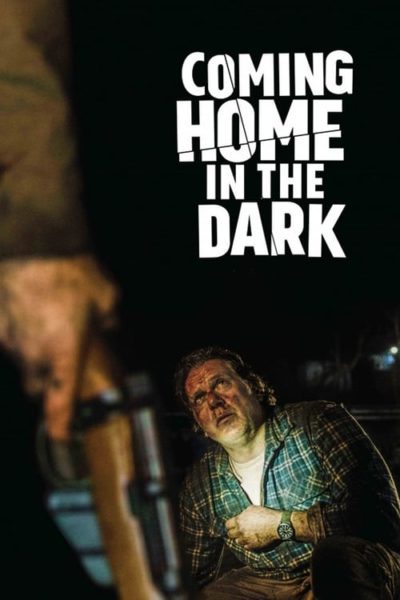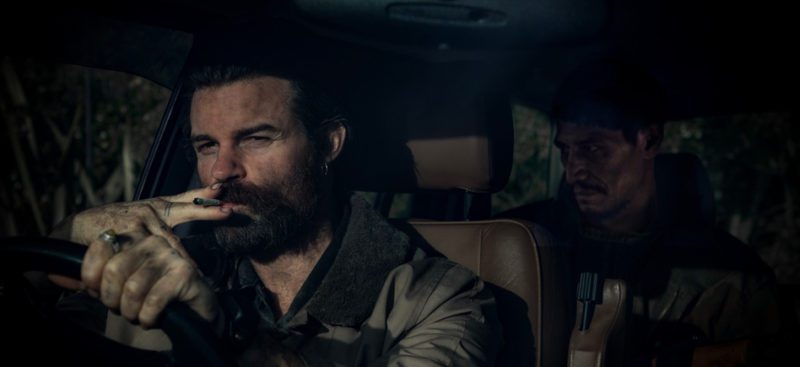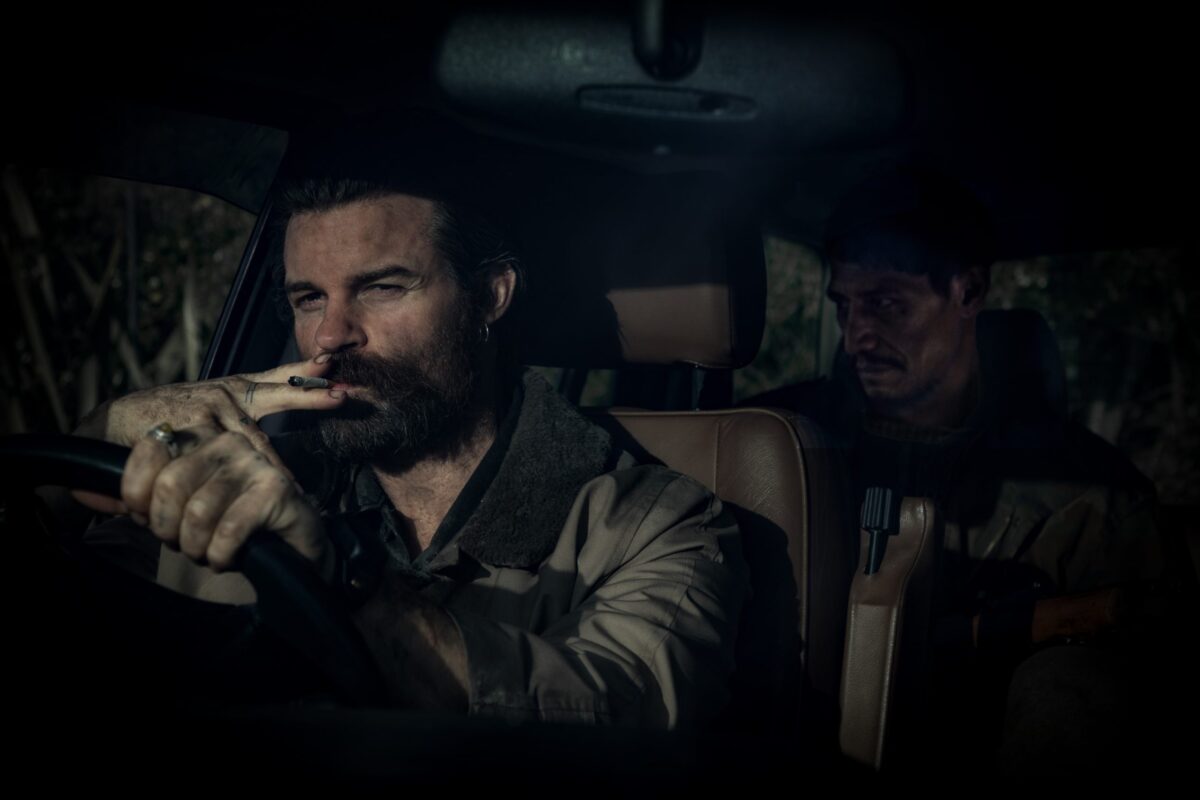The new phenomenal thriller, Coming Home in the Dark, recently premiered at Sundance 2021 and blew everyone away with its story and incredible sound design from John McKay and Matt Lambourn. I recently had the privilege of chatting about this film, their career, details about sound design, and much more!

PopHorror – First, I just want to say it’s an honor to chat with you guys. How did you get involved in the filmmaking business?
John McKay – I was mad on movies in my teens but there was no film industry in NZ at that time, and I entered the “business” via the state broadcaster which was the only avenue at that time. With the formation of the New Zealand Film Commission in the late ’70s, the industry started to form and grow, so I left TV for the developing film industry.
Matt Lambourn – Having studied theatre and drama at school, I was always interested in how to ‘elicit character’. When I studied orchestral composition at University, I became more interested in the power of manipulation that music can have over an audience’s emotions. My flatmate/roommate at the time worked in TV and invited me to take a look at her studio. It was a real ‘aha’ moment for me when I saw that you could use sounds and sound effects to BOTH create character and manipulate emotions; and not just with actors but with any inanimate objects. That realization of the power of sound had me hooked, and still does.
PopHorror – Awesome! Were there any films that you watched growing up that specifically made you want to work in sound design?
John McKay – I think it was more a collection of films, the American cinema of the 70’s was hugely influential in my development especially the films of Martin Scorcese and Francis Coppola.
PopHorror – What was the first project you ever worked on?
John McKay – “Death Warmed Up”, 1984, a film by David Blyth, a horror genre picture about medical experiments that go awry. A very silly but fun film. I really didn’t know anything about making a soundtrack but worked extremely hard, and I didn’t make a mess of it so on the back of this film my sound career took off. Apart from a period out of the industry to recharge I have been working in the business of sound ever since.
Matt Lambourn – One that had a decent international reach was The World’s Fastest Indian. I worked with two excellent designers, Tim Prebble and Dave Whitehead. I edited foley, which was performed by Carrie McLaughlin. For such a human story, there was a very specific feel to give the character of Burt Munro (played by Sir Anthony Hopkins). He was older in years, determined, perhaps a little naive, but also unflappable. In addition, there was a great footstep contrast between the sandy NZ beaches and farms where Burt lived and trained and the distinctive Utah salt flats where he broke the speed record. And because Burt’s character was so intertwined with his motorcycle, that too had to have a specific, authentic sound. Since I also worked as a field sound recordist, we managed to find a very similar example of the Indian V-twin Scout motorbike to record. Every gear change, throttle pull, wheel turn, is as true to the sound as possible. This, with the brilliant work of the vehicle engine editors, made for a soundtrack that was as intimate as it was exciting.
Another was a very kiwi comedy-horror called Black Sheep (NZ is known for having lots of sheep). When the sheep turn into zombies (of course) and start rampaging around the farm, naturally the violence as they feast on people has to be as silly and hilarious as it was gross. Tim Prebble and I bought a huge pallet of vegetables and ripped, squelched, crunched, peeled, and thumped them in every imaginable way. The result was a delicious-smelling recording studio and a vast library of revoltingly useful violence effects, many of which are still employed today.
PopHorror – That’s amazing! Can you tell us more about POW Studios?
John McKay – POW Studios was formed in 2015. Four of us had just successfully completed a Chinese project and decided why don’t we be more proactive in finding offshore work. Initially, our focus was toward Asian projects, but over the 5 years of our existence, we have grown into all avenues of post including VFX and picture finishing plus the development of our own projects. The aim always has been to be in control of our destiny rather than the usual contractor journey of waiting for the phone to call.
PopHorror – I think sound is one of the most important parts of a film and can sometimes make or break it. What all goes into sound design?
John McKay – Well that’s a huge question! From the atmospheric layering of ambiance to etching the fine detail through foley effects to the microsurgery of dialog editing. Sound design is the dramatic shaping of sound to tell the story of the film aurally. In the end, it is the combination of detail and nuance into a seamless whole.
PopHorror – Thanks for the details! What’s your favorite part about working in sound design?
John McKay – The best compliment a Sound Designer can get is that the audience feels the movie emotionally.

PopHorror – You recently worked on the new thriller Coming Home in the Dark, which is a fantastic film. How did you get involved with it?
John McKay – We had previously worked with one of the producers, Catherine Fitzgerald, and POW was approached while the producers were putting together the finance package. POW supported the film’s successful application for funding at the New Zealand Film Commission.
PopHorror – How does sound design on a horror/thriller film like this one compare to other films?
John McKay – In Coming Home in the Dark the taut tension is achieved by the sound being slightly off-kilter and not using usual thriller tricks so the audience is always off-balance. You sense something is going to happen, but you never know exactly when. I hadn’t seen the movie for a while, and I was even surprised at some moments at a recent screening.
Matt Lambourn – On a horror film, particularly a psychological one (as opposed to a slasher), there is wide scope to represent the lead character’s state of mind through sound. Coming Home in the Dark is about consequences, and where those place someone in their physical as well as emotional environment. Just as a tense piece of music might always be trying to return to the ‘home’ key and resolve, the characters are always yearning to return to their safe zone. So for the family, remote beauty becomes fearful isolation; stability (mental and physical) gives way to confusion. The comfortable world is always so close, yet just out of reach. This can be foreshadowed in the soundtrack with hints of unease creeping in through the ambiances, such as an out-of-place wind or slightly too much weight given to the mundane vs the shocking sound effects. During scenes set in a car, they can hear the countryside just outside, or other traffic going by nearby, but completely indifferent to their harrowing plight. And as they start to come to realizations of their own, these sounds that were once safe take on a nastier, harsher quality, as hope ebbs away.
PopHorror – So much goes into the sound design! Did you have any favorite scenes?
John McKay – The film, like the script, has the best opening 20 minutes of any movie I have ever worked on. The descent into the dark slowly builds to a shattering climax and you are hooked. Yong-Le Chong, the sound effects editor, and I worked on making the initial gunshots hit like a thunderbolt. To really make them brutal and in your face.
Matt Lambourn – On Coming Home in the Dark – It’s not so much a single scene as the change of mood over time. Callum Scott, our ambiance editor, did a lovely job of creating a fragile beauty within the sonic landscape, which turns hostile and harsh so delicately that you don’t consciously notice; but feel a creeping sense of unease which turns to cold dread. With much of the film in actual darkness, it is left to the sound and our imaginations to evoke the desolate, uncaring world through which the characters travel.
On other films – One favourite scene is in J.A. Bayona’s El Orfanato. A desperate mother hires a team of paranormal investigators to help discover what has happened to her missing son. They bring a load of old analog ghost-hunting equipment, along with a spiritual medium, to her sprawling ex-orphanage of a house. They set up sensors, tape recorders, mics, and cameras throughout the house. They base themselves at a station on the ground floor, where they can watch the medium investigate through a TV screen and communicate with her via radio. As we, the audience, see her move between rooms on their little screen, we (and the team) hear her footsteps echo through the floor above them – this eerie separation of sound from the subject brilliantly evokes the disembodiment that ghosts symbolize. Also, we are watching them through our movie screen, as they watch her through their screen, as she watches the ghosts. We get to share multiple layers of the characters’ emotions, all the way through to the ghosts of the screaming children themselves. It’s a perfect example of every aspect of filmmaking working in harmony, with all that emotion carried by the sound.

PopHorror –What’s your favorite score on a film ever? What’s your favorite score on a horror film?
John McKay – I always think that a great score is one that keeps you in the film and never throws you out or draws attention to the music. I am a great fan of Ry Cooder’s scores; they seem to musically chart the inner emotions of the characters and how they are feeling without resorting to cliches.
Matt Lambourn – Some of my favourite scores are those that are so appropriate that I’m transported and hardly remember them; I can’t tell whether they’re sound design, FX or score e.g. Hans Zimmer’s work on Inception or Blade Runner 2049. They make a feature of sliding in front of or behind the fourth wall, the effect being that the audience is subtly dragged into the film. Others that overtly celebrate then subvert cliche, such as Danny Elfman’s work on Nightmare Before Christmas and Corpse Bride, are equally as satisfying. There’s always a balance to be struck between reinforcing subject material and allowing the audience to take a break from it. In Coming Home in the Dark, composer John Gibson took a minimal approach, meaning that in some of the most shocking scenes the score was either underplayed or absent: very effectively leaving the audience with nothing to cling to through the horror.
PopHorror – You’ve worked on some big movies like Lord of the Rings and The Hobbit. What were the experiences like and how did they shape your career?
John McKay – Lord of the Rings was the first time any of us in NZ sound had worked in larger teams, so adjusting to a group dynamic was one of the first steep learning curves. Up until that time NZ films normally only had two sound editors and an assistant if you were lucky. During Lord of the Rings, I developed a software application, Virtual Katy, for conforming audio to new edits. This was what we seem to do every second day, and it was extremely tedious till we automated part of the process. This led to running my own software business for 7 years before returning to sound editing around 2010.
Matt Lambourn – On some of the larger films, the timeframes are longer and the actual contribution to the soundtrack might be smaller. So there is a real focus on attention to detail, honing and revising to make sound material fit the director’s vision exactly. It’s not the time for ‘running on instinct’, but to actually plan and develop new material, to experiment with the intricate subtleties of how sound can match picture. All my best discoveries have been made on well-resourced films, where there is time to question your own assumptions, eliminate possibilities, explore variations and arrive at a uniquely perfect sonic place.
PopHorror – Anything else you’d like to talk about or any upcoming projects beyond this one?
John McKay – Currently we are doing our second animation feature, Young Lion Dancer, for Yi Animation of Guangzhou, China. We did a film for them three years ago and it was a very fun collaboration. With the pandemic there will be no opportunity for face-to-face, so we are completing the project completely remotely.
 PopHorror Let's Get Scared
PopHorror Let's Get Scared




